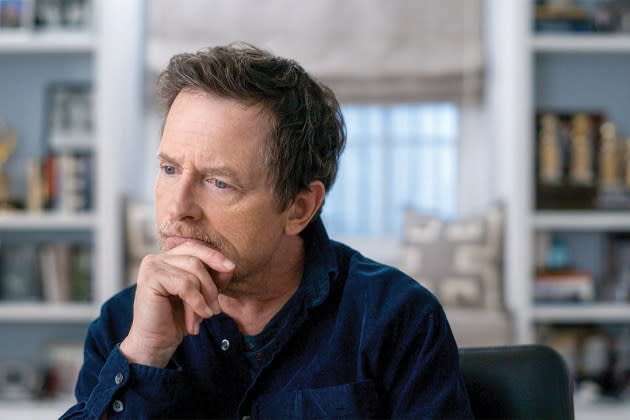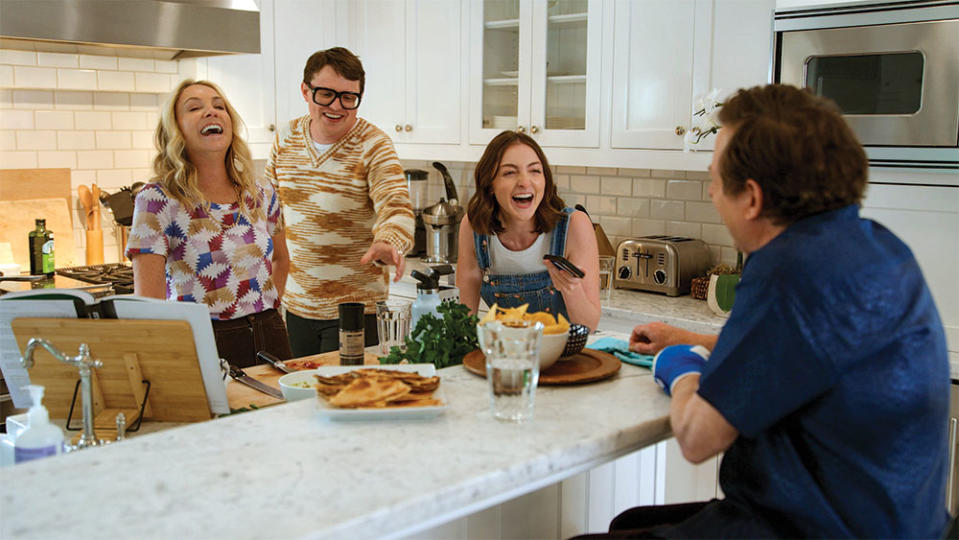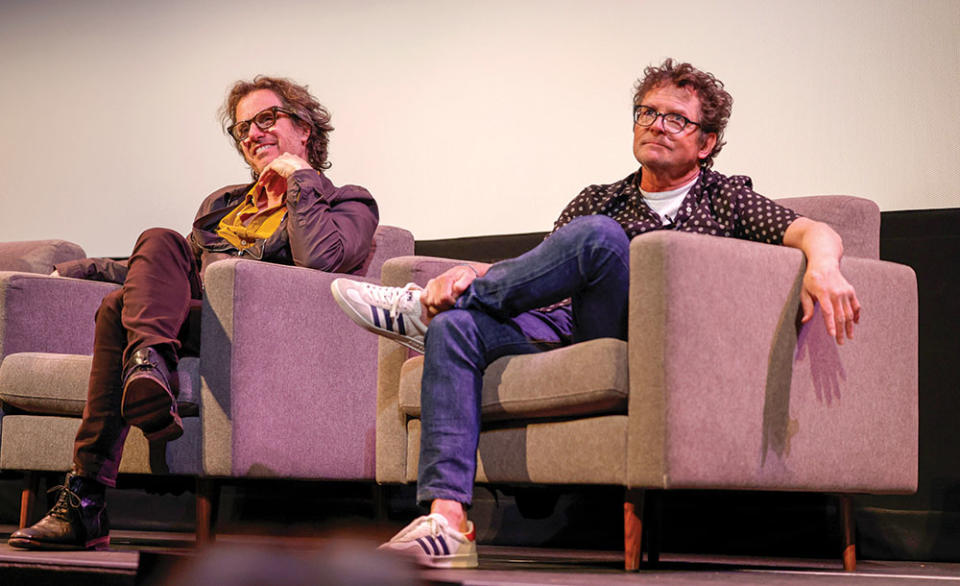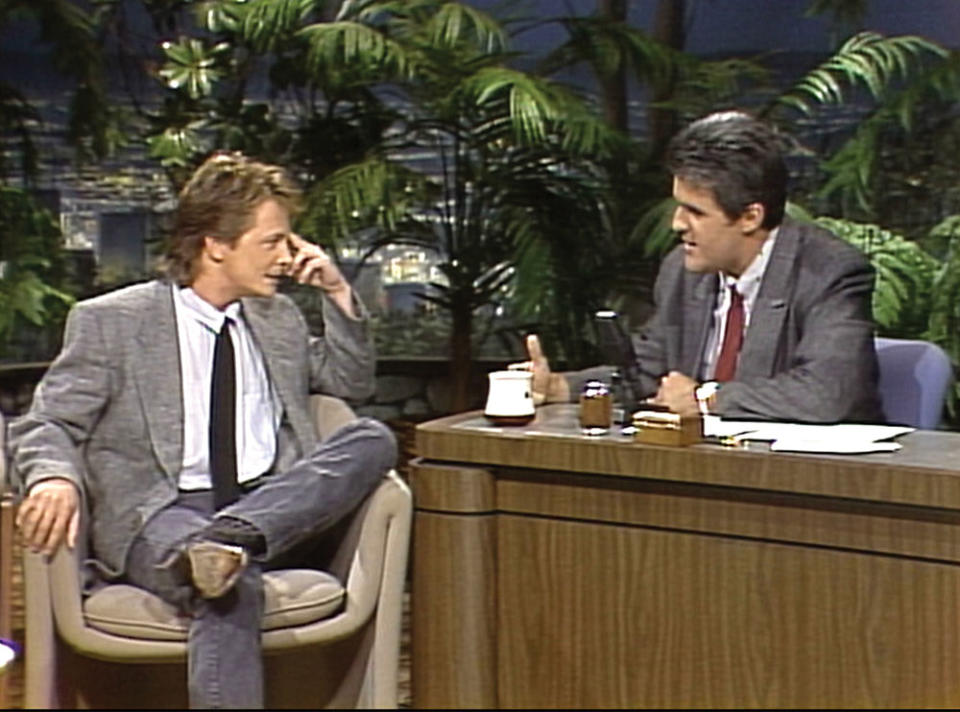‘Still: A Michael J. Fox Movie’ Director Talks His Approach to the Celebrity Biodoc: “I’m Always Looking for a Very Intimate Connection”
- Oops!Something went wrong.Please try again later.

Oscar winner Davis Guggenheim is no stranger to bold-faced names, having worked with the likes of Al Gore, Barack Obama and Malala Yousafzai. But some three years ago, he found himself, as he says, “stuck.”
“I wanted to do something different. I wanted to find joy in my work. I wanted to experiment and take some big risks,” says Guggenheim. At the time, he was reading Michael J. Fox’s autobiography, No Time Like the Future, and a light bulb went off. “I said, ‘Wow, this could be a wild ride.’ That was one of the first things I jotted in the margins of the book: ‘This could be a wild ride.’ “
More from The Hollywood Reporter
Daniels, Michael J. Fox and Padma Lakshmi Set for Clinton Global Initiative Meeting
Emmys: Vets and Breakouts Make Up the Drama Lead Actress Race
'Better Call Saul' Star Rhea Seehorn on Why She's Not Completely Saying Goodbye to Kim Wexler

Still: A Michael J. Fox Movie, released via Apple TV+, is the story of Fox’s life and career told through the lens of the Back to the Future actor’s diagnosis and continued maintenance of his Parkinson’s disease. After its debut at the Sundance Film Festival, Still earned seven Emmy nominations, including one for Guggenheim for outstanding directing for a documentary/nonfiction program.
The documentarian talks to THR about how he deviated from the typical biodoc playbook and casting Michael J. Fox with Fox in the room.
Why did you see a doc about Michael J. Fox as a “big risk”?
In the past few years, my films have gotten pretty serious. I did stuff with Bill Gates about nuclear reactors in toilets. And then a film with Malala about education and the Taliban. I’m so lucky to make those projects, but I think, as a creative person, you can easily get stuck — even when you’re happy in that stuck place. There’s nothing worse when you’re at work and you feel like, “I’m going to just do the same thing I did last time.” I think as you get older, it’s a little harder to take risks. It’s a little harder to be in a creative place where you’re uncomfortable, especially when you’ve had some success. And I was like, “Screw it.”

You play with form a lot with this movie, using cinematic re-creation and having clips from old movies act as reaction shots to narration. What was the thinking behind these choices?
When I pitched it to Apple, I was like: “Wild ride, big music — you’re not watching a documentary, you’re watching a movie.” But then Michael Harte, the editor, came on board and he loved Back to the Future, he was an uber-fan. There’s a goofy picture of him getting his picture with Michael J. Fox in front of a DeLorean. If you ever saw the picture, it would totally embarrass him. Michael started to show me early cuts where instead of using reenactments, he started putting footage from Michael’s other movies. Moments from Bright Lights, Big City and The Secret of My Success, movies where Michael was about the age that he was when some of these reenactments would’ve taken place. We started as a very friendly battle. I think that’s the big adventurous leap we took.
Initially, I pitched it as “no talking heads.” I didn’t want any interviews. I didn’t want to go to experts. I didn’t want to talk to family members. I just felt like if you’re going on a wild ride, you don’t want to use footage that feels like a typical documentary. But then I did this commercial and there was this really great shot that the cinematographer caught — it looks like the actor’s looking right in the camera. I did that with Michael and was just like, “Let me just try this.” Michael J. Fox was so winning, and he was so funny, and he was so emotionally gripping and his eyes were so sharp.
Practically, how did you accomplish that setup?
In traditional interviews, the interviewer and the subject are pretty far apart just by the nature of lenses and angles. Cinematographers like long lenses because people look better, so sometimes you’re, like, 10 feet apart. And then imagine a group of people, a producer on a cellphone and a soundman with a boom. As much as the interview looks intimate on camera, it’s not in practice. Errol Morris invented this thing called the Interrotron; he used it a lot to great success, and then it became very popular. I never liked it because that, too, actually made distance between the interviewer and the subject even farther. The beauty of the Interrotron is that the subject is looking directly into the lens, but for the interviewer, you’re looking through a mirror, or sometimes a mirror and a monitor. I’m always looking for a very intimate connection with the person I’m interviewing. I want both of us to get lost in the conversation, and the only way to do that is to be looking into each other’s eyes, really. It was Clair Popkin, who was the DP of Free Solo and other great movies, and we were on a commercial shoot, and he set this up and I’ve never seen it before. I think it’s a 40-millimeter lens, at a certain distance and a certain angle, where it looks like the subject is looking right into the lens, but the subject’s actually looking into my eyes.

The audience hears your voice asking questions in Still. Some doc filmmakers are OK with being a presence in their projects, while others consciously keep themselves very removed. What was your thinking?
I don’t like the sound of my voice. I sound sometimes pretentious and sometimes like an aging guy who’s losing his voice. So I don’t ever think I’m going to use my voice, but editors like to use it because it’s a storytelling device, really. When you hear my question, it points Michael J. Fox’s answer in a certain direction. In a few cases, it tells the audience where to look. When I asked this one question, I wasn’t thinking this is going to be a breakthrough in the movie — I was just asking what was on my mind in the moment. But it was a breakthrough in the editing room when I said, “The sad-sack story is that Michael J. Fox gets this debilitating disease and it crushes him.” And then Michael thinks about it, and he goes, “That’s boring.” And that is maybe the most important storytelling point in the movie.
You have filmed re-creations where there is a body double playing a young Michael J. Fox. How did you find him?
We did a full casting session in Los Angeles with Michael. We filmed that stuff thinking, “Maybe we can put that in the movie.” It’s interesting because both Michael and I really felt like whoever the actor was to play Michael J. Fox, you couldn’t see their face because no one else can be Michael J. Fox. It’s so interesting with AI and with the proliferation of imagery, you’d think that it would be easy to find someone, but you can never find anyone who will ever convince you from the front that it’s Michael J. Fox. Isn’t that incredible? Billions of people and there’s only one Michael J. Fox. So, the way we storyboarded it was that we are always seeing this person from the side or the back, so what we’re really casting is someone who could move like Michael J. Fox. We had three finalists, but Danny Irizarry had this sliding, always-at-a-tilt movement that Michael J. Fox has.
I can’t imagine auditioning to play Michael J. Fox in front of Michael J. Fox.
We actually had the actors slide across the hood of a car like in Back to the Future. None of them could do it, obviously. And Michael, who struggles with walking, was like, “Let me show him.” Everyone said, “No, no!” It was a very funny moment. It’s amazing when you look at his movies, he makes those movements look so easy, so simple. When you think of Tom Cruise, you’re like, “Oh, that’s so hard.” With Michael J. Fox, you never thought about it because he just did it so effortlessly. It was almost as if he’s Fred Astaire. He’s always almost falling down but also gliding. It’s beautiful.

Interview edited for length and clarity.
This story first appeared in an August stand-alone issue of The Hollywood Reporter magazine. To receive the magazine, click here to subscribe.
Best of The Hollywood Reporter
10 Times Hollywood Predicted the Scary (or Not So Scary) Future of AI
21 Actors Who Committed to Method Acting at Some Point in Their Career
Every 'Teenage Mutant Ninja Turtles' Movie Ranked, Including 'Mutant Mayhem'

